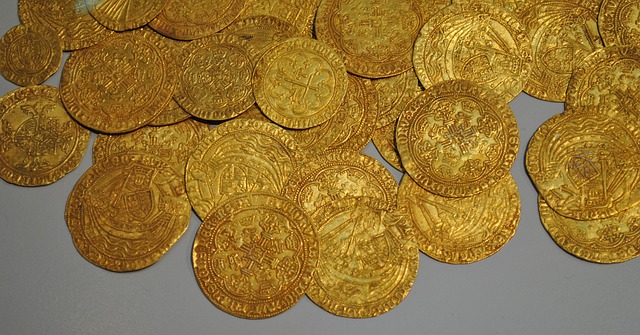Investing in precious metals through an Individual Retirement Account (IRA) can offer a diversified portfolio with inflation protection and stability. There are various IRA types available—traditional, Roth, SEP, and SIMPLE IRAs—each with specific rules on contributions and taxes. Precious Metals IRAs come in allocated and unallocated forms; allocated IRAs let you own specific metals stored in vaults, while unallocated IRAs pool investments for shared benefits. Investors must follow IRS guidelines on metal purity and form, and should work with a reliable Precious Metals IRA provider who can guide them through the process, ensuring compliance and aligning with personal retirement goals.
When selecting a provider, it's essential to evaluate their history of IRS compliance, the quality of their educational materials, partnerships with reputable refineries and mints, accreditation status, and BBB rating for consumer protection assurance. The process of rolling over to a Precious Metals IRA involves careful planning and strict adherence to regulations, including choosing from IRS-approved precious metals like gold, silver, platinum, and palladium, and storing them in an IRS-approved depository. Diversification is key, with options beyond the traditional gold and silver into platinum and palladium, each offering unique benefits. Regular portfolio reviews are necessary to maintain a diversified and resilient Precious Metals IRA that adapts to market changes and aligns with your investment strategy and risk tolerance.
Exploring the confluence of retirement planning and tangible asset investment, this article delves into the burgeoning field of precious metals IRA companies. These entities facilitate the inclusion of gold, silver, platinum, and palladium within one’s retirement portfolio, offering a diversification strategy that aligns with historical wealth preservation methods. We will navigate through understanding the various IRA options, evaluating reputable firms, and the mechanics of rolling over existing accounts to accommodate these valuable metals. Furthermore, we will explore the range of physical precious metals permissible in an IRA, as well as strategies for constructing a balanced portfolio that leverages the intrinsic value and potential resilience of these metals amidst economic fluctuations.
- Understanding Precious Metals IRA Options
- Evaluating Reputable Precious Metals IRA Companies
- The Process of Rolling Over to a Precious Metals IRA
- Types of Physical Precious Metals for IRAs
- Strategies for Diversifying Your Precious Metals IRA Portfolio
Understanding Precious Metals IRA Options

When considering the inclusion of precious metals in an Individual Retirement Account (IRA), it’s crucial to explore the various IRA options available that cater to physical gold, silver, platinum, and palladium. These accounts are designed to provide a diversification strategy for retirement savings, offering a tangible asset component to protect against inflation and market volatility. Investors have the choice between different types of Precious Metals IRAs, including traditional, Roth, SEP, and SIMPLE IRAs, each with its own contribution limits and tax implications.
Within the realm of precious metals IRA options, investors can select from allocated accounts, where the metals are held in a secure vault and the investor owns a specific percentage of the total metal in the vault, or unallocated accounts, where the investor’s share is pooled with that of other investors. The choice between these two types often hinges on factors such as liquidity needs, storage preferences, and risk tolerance. Additionally, there are IRS regulations that dictate the purity and form of the metals acceptable for an IRA, ensuring that investors’ investments comply with the standards set forth for these retirement accounts. It’s important to work with a reputable Precious Metals IRA company that can guide you through the process, from selection to acquisition, to ensure your investment aligns with your retirement goals and adheres to IRS rules. Understanding these options allows investors to make informed decisions tailored to their financial objectives and risk profiles.
Evaluating Reputable Precious Metals IRA Companies

When considering incorporating precious metals into an Individual Retirement Account (IRA), evaluating reputable companies is paramount. Investors should scrutinize a potential IRA custodian’s track record, compliance with Internal Revenue Service (IRS) regulations, and the types of precious metals they offer. A trustworthy company will have a transparent history, customer testimonials, and a clear understanding of the tax implications associated with these investments. Additionally, it should provide educational resources to inform clients about the benefits and risks of holding physical metals within a retirement account. Due diligence is essential; investors must verify the company’s partnerships with legitimate refineries and mints, ensuring the purity and authenticity of the metals held in the IRA. This due diligence extends to checking the company’s accreditation status with relevant authorities and their standing with the Better Business Bureau (BBB) or similar watchdogs for consumer protection. By carefully assessing these factors, investors can select a precious metals IRA company that aligns with their investment goals and provides a secure platform for diversifying their retirement savings with tangible assets.
The Process of Rolling Over to a Precious Metals IRA

Rolling over to a Precious Metals IRA is a multistep process that involves careful planning and adherence to IRS regulations. The first step for an investor interested in this option is to select a custodian that specializes in precious metals IRAs. This custodian will manage the account and ensure that all transactions comply with the Internal Revenue Service (IRS) guidelines. Once a custodian is chosen, investors must initiate a rollover from their existing retirement account, such as a traditional IRA, Roth IRA, or 401(k), to the new precious metals IRA. This can typically be done directly by contacting the current plan provider and requesting a direct rollover to the new custodian. It’s crucial to avoid any early withdrawal penalties, which is why the funds should be rolled over rather than cashed out.
After the funds have been transferred to the new custodian, the investor can then select the types of precious metals to include in their IRA. The IRS stipulates specific purity and fineness standards that the metals must meet for them to be eligible for tax-advantaged treatment within an IRA. Common selections are gold and silver coins or bars, platinum coins, and palladium bars, all of which must be stored in a depository approved by the IRS. The custodian will facilitate the purchase of these metals from approved dealers and arrange for secure storage on behalf of the investor. Throughout this process, maintaining detailed records is essential to ensure compliance with tax laws and to track the purchases and holdings within the IRA.
Types of Physical Precious Metals for IRAs

Investors looking to diversify their retirement portfolios with physical precious metals have a variety of options within an IRA framework. Among the most sought-after are gold and silver, which have historically been considered safe-haven assets. Gold, often favored for its inherent value and resistance to corrosion, can come in various forms such as coins like the American Gold Eagle or Krugerrand, bars manufactured by recognized refiners, and even rare collectible items. Silver, known for its industrial applications and investment potential, is available in bullion rounds and bars, as well as in pre-1965 U.S. coins that hold intrinsic value within an IRA.
Platinum and palladium, while less common, are also valuable additions to a precious metals IRA. Platinum’s rarity and the difficulty of extracting it often make it a more exclusive investment, with demand typically outstripping supply. Palladium, frequently used in electronics and autotive industries for its ability to withstand extreme conditions, has seen significant price fluctuations based on industrial demand. Investors can choose from bars and coins produced by reputable mints to include these metals in their retirement accounts, thus creating a diversified precious metals portfolio that can potentially offer both growth and stability.
Strategies for Diversifying Your Precious Metals IRA Portfolio

When considering strategies to diversify your Precious Metals IRA portfolio, it’s crucial to think beyond the traditional gold and silver holdings. Investors should explore a range of precious metals that can offer different benefits and risk profiles. For instance, incorporating platinum and palladium, which are industrial metals with significant demand in automotive and electronics sectors, can provide a diversification benefit. Another approach is to invest in rare coins and bullion with a history of scarcity, which can potentially appreciate more than common precious metals during times of economic uncertainty. It’s also wise to consider the geographic locations where these metals are sourced, as political stability in mining regions can influence supply and prices. By diversifying not only across different types of precious metals but also considering mints and refiners with established reputations for quality and purity, investors can construct a more resilient Precious Metals IRA portfolio that is better equipped to withstand market volatility. Additionally, staying informed about market trends and the specific supply and demand dynamics of each metal can help in making informed decisions that align with your investment goals and risk tolerance. Regularly revisiting and adjusting your portfolio based on these factors is key to maintaining a well-diversified precious metals IRA over time.
Incorporating physical precious metals into a retirement portfolio via a self-directed IRA can serve as a strategic hedge against market volatility and economic uncertainty. By choosing a reputable precious metals IRA company, investors can seamlessly integrate gold, silver, platinum, and palladium into their long-term investment plans. With a clear understanding of the options available, the rollover process, and the types of precious metals permissible within an IRA, individuals are well-equipped to diversify their portfolios in a manner that aligns with their financial goals and risk tolerance. This article has outlined the key considerations for those interested in this alternative investment avenue, providing a comprehensive overview to navigate the world of precious metals IRAs effectively.
